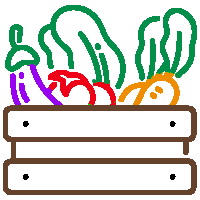Prikaz osnovnih podataka o dokumentu
Glyphosate-Tolerant Soybean Yield Loss and Yield Response to Micro-Rates of 2,4-D as Influenced by Growth Stage
| dc.creator | Cuvaca, Ivan | |
| dc.creator | Knežević, Stevan | |
| dc.creator | Jovanović, Darko | |
| dc.creator | Scott, Jon | |
| dc.date.accessioned | 2024-02-22T12:35:37Z | |
| dc.date.available | 2024-02-22T12:35:37Z | |
| dc.date.issued | 2019 | |
| dc.identifier.isbn | 9781713803362 | |
| dc.identifier.uri | http://RIVeC.institut-palanka.rs/handle/123456789/834 | |
| dc.description.abstract | With the introduction of 2,4-D-tolerant crops, the use of 2,4-D and the risk of drift in non-2,4-D tolerant crops including soybean are likely to increase. To understand the impact of 2,4-D drift on glyphosate-tolerant (GT) soybean, a study using a randomized complete block design with four replications and a split-plot arrangement of treatments was conducted in 2019 near Concord, NE. Main plots consisted of three 2,4-D application times [second trifoliate (V2); beginning of flowering (V7/R1); and full flowering (R2)] and subplots consisted of six micro rates of 2,4-D (1/5; 1/10; 1/50; 1/100; 1/500; and 1/1000 of the label recommended dose of 1,120 g ae ha-1) and a check with no herbicide applied. Soybean injury was visually assessed at 7, 14 and 21 days after treatment (DAT). Grain yield was also collected using a small-plot combine. In general, there was an increase in soybean injury and reduction in grain yield with increase in 2,4-D dose. GT soybean was more sensitive to 2,4-D injury at R2 than V2 and R1 stages. Less than 1/10 of the label recommended dose of 2,4-D caused 5-20% injury to GT soybean. Based on estimates of the effective dose of 2,4-D required to cause 5% injury, GT soybean was 1.4- and 1.2-fold more sensitive to 2,4-D at R2 (44.88 g ae ha-1) than V2 (61.78 g ae ha-1) and R1 (53.12 g ae ha-1) stage, respectively. This increase in GT soybean sensitivity to 2,4-D injury has ultimately resulted in a significant reduction in grain yield especially at the R2 stage. Preliminary data analysis showed that 2,4-D dose of 0.33 g ae ha-1 reduced GT soybean yield at R2 by 5% (0.22 Mg ha-1) compared with 54.58 and 1.77 g ae ha-1 at the V2 and R1 stage, respectively. These results show that 2,4-D drift poses a risk to GT soybean and can result in significant yield losses; therefore, it is crucial that 2,4-D drift is prevented especially at the R2 stage. | sr |
| dc.language.iso | en | sr |
| dc.publisher | North Central Weed Science Society (NCWSS) | sr |
| dc.rights | openAccess | sr |
| dc.source | Proceedings of the 74th Annual Meeting of the North Central Weed Science Society, December 10-13, 2019 Columbus, OH | sr |
| dc.subject | 2,4-D | sr |
| dc.title | Glyphosate-Tolerant Soybean Yield Loss and Yield Response to Micro-Rates of 2,4-D as Influenced by Growth Stage | sr |
| dc.type | conferenceObject | sr |
| dc.rights.license | ARR | sr |
| dc.citation.spage | 38 | |
| dc.identifier.fulltext | http://RIVeC.institut-palanka.rs/bitstream/id/2661/DJ08.pdf | |
| dc.identifier.rcub | https://hdl.handle.net/21.15107/rcub_rivec_834 | |
| dc.type.version | publishedVersion | sr |


